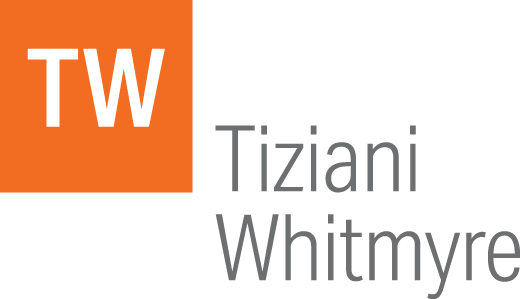Pandemic Marketing Roundtable: A Report from the Front Lines
How are leaders overcoming the challenges of marketing in a pandemic? To find out, Tiziani Whitmyre conducted a virtual roundtable to explore the problems faced by technical B2B and life science companies, and discover the solutions they are creating to move their firms forward.
Our roundtable consisted of Tom, the marketing lead at a global scientific instrument provider; John, a marketing leader at a motion control company; Chris, a general manager at a life science components firm; and Rob, the CMO at a global industrial automation business. (We are not using their last names to respect the honesty of their answers.)
We wanted to learn how they are striving to sustain revenue, how their sales and marketing tactics have changed, what tactics are successful, and how they are positioning their businesses for recovery.
Q: What have been your biggest sales and marketing challenges in sustaining revenue?
Tom: The real answer is how to do more with even less. Even with budgets cuts and furloughs, creating new content and keeping customers consistently engaged is still the main focus.
John: From a sales perspective, we have seen a delay in many applications we’re working on. However companies are not cancelling projects or orders. From the marketing side, while there has been a slowdown in sales, holding the budget and not overspending have been keys. Also, being able to work within that budget to repurpose funds from one project to another has been very helpful.
Chris: With overall demand down, how to reach new and existing customers and generate awareness of our products and services have been key issues. This situation has been exacerbated by the loss of customer access and face-to-face meetings. One of our differentiators has been personal attention, which has been much harder to do electronically.
Rob: The loss of sales conferences and meetings has been the biggest challenge as we generate leads this way. We move the sales process forward via in-person meetings to demonstrate our hardware, which is quite differentiated in look and feel. Once successful meetings occur, the next step is often testing and piloting our products, and without people in offices or the field to implement tests and pilots, the sales funnel process gets stalled. Furthermore, where we had commitments from customers already to test and pilot our products, these have largely been delayed due to people working remotely or being furloughed.
Q: How has the pandemic changed your sales and marketing tactics?
Tom: It has refocused our efforts on organic traffic; evaluating how effective our outreach and engagement was. We ungated all content and provided new webinars, videos, and nurturing content (all generated in-house) to keep our audiences informed and engaged.
John: For sales, it has caused us to seek alternative ways of bringing product into the country from our manufacturing plants in Europe. As for marketing, I think that communication and guidance from our marketing agency have brought to light newer ways of working within a given budget so that some programs have had more immediate results.
Chris: As a custom shop, relationships and personal meetings to show products are key. Now, using video, the loss of customer access and the personal touch is evident. With customers working from home, video provides a much more limited access time. It is making sales contact much harder. We are shipping out machined accessories and parts so potential customers can see and feel our quality. Plus, we’re focusing on our website and social media to get engage with our audiences. This includes getting customers to follow us on platforms such as LinkedIn to receive content-driven messaging.
Rob: We have focused a lot more on webinars as we realize that people are largely stuck at home and/or out of work and therefore have more time to pay attention and watch video-based content. We have used a combination of sponsored webinars on topics of interest to our focus markets to attract new leads as well as in-house webinars for training and deeper product explanations. We are even doing some remote demonstrations across multiple locations to show how our products can be run and managed remotely.
Q: What have been your successes? What tactics are working in this new environment?
Tom: Traffic and engagement are up. We’re experiencing increased content downloads. We have also generated new content. The goal is to move users from a previously gated MQL status through the pipeline to an SQL status when they request a quote. By measuring analytics across the pipeline to quote requests to final sales, we can qualify the success of the approach.
John: Continuing communication with prospects via Skype, Go To Meeting, and other platforms have been effective. The lack of in-person meetings has led everyone to become more dependent on the virtual world. Also, putting out more relevant content via white papers, social media, and the like have been excellent ways at supporting the company brand.
Chris: Here’s a great example. We had a group video conference yesterday with a channel partner that included a show and tell of products and an open Q&A. It elicited opportunities that they “did not know we could do. Microsoft Teams platform made it possible.
Rob: We have seen outstanding results with high registration and attendance numbers on our webinars. Furthermore, people who do attend watch the entire webinar. Engagement is good with many questions. Even for those who do not attend, they watch the recorded on-demand versions. This again shows that this extra home time affords people the time to pay attention to content of interest. Our introductory training series also provides free training that helps potential system integrator partners to make progress on certification and earn professional development hour credits.
Q: How are you positioning your business for the recovery?
Tom: We will continue with this approach. As budgets are restored, we’ll re-engage partners to help produce the content and keep measuring and adapting as the results are assessed.
John: The recovery for the manufacturing areas will be slow from all indications. Luckily we were able to strategize and plan our marketing campaign and prioritize before the pandemic came at us. We decided to focus on target markets. No one could’ve foreseen the 3D printing or medical markets becoming our major growth opportunities. We feel we have hit a home run penetrating these segments. Going forward “post pandemic,” it will seem like we’re coming out of some zombie apocalypse and a new day will be dawning. The things that we have had to do as a result of the virus will be enhanced further and new ideas and newer and better ways to communicate will take shape. Marketing can and most likely will continue as it always had with a few adjustments. But in the end, we still have to brand, show thought leadership, and keep relevant! Communication with the agency will be vital to our success!
Chris: There will be fewer in-person meetings, trade shows, and conferences. We’ll be using more content to attract and engage customers via social media. Our program will include sending out actual first article-products. We expect the new business norm will now include video and conference calling until the population has access to a new vaccine.
Rob: People have definitely become more familiar with teleconferencing applications and remote meetings. I think people have seen that these can be highly effective and reduce the need for face-to-face meetings, training, and even detailed work instructions and management. Remote meetings save a lot of time and money, and I think people will continue to use them more than they did before the pandemic. Even virtual conferences will grow faster as a result of social distancing.


